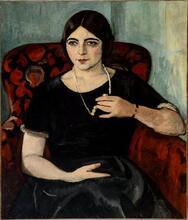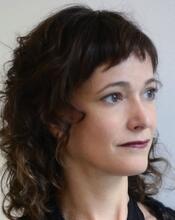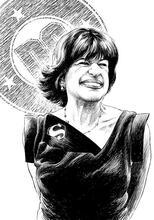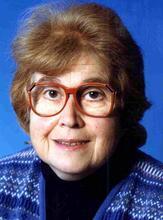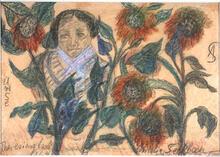Lillian Nassau
Antique dealer Lillian Nassau rekindled the public’s enthusiasm for art deco and art nouveau at a time when Tiffany lamps were being destroyed for their bronze. At the height of the Depression, Nassau supported her two children by selling jewelry door to door on Long Island. She opened her first Manhattan shop in 1945, specializing in antiques from the late nineteenth and early twentieth century. In 1956 she bought her first Tiffany lamp for $175 and began creating interest among buyers for art nouveau pieces ranging from Liberty silver to American decorative pottery. Her discernment not only made her shop a major hub for collectors, it also revived interest in European artists.
Article
Lillian Nassau, the doyenne of New York City antiques dealers, was instrumental in the revival of international interest in the lamps and metalwork created by Louis Comfort Tiffany at the turn of the century. In addition to rehabilitating Tiffany, whose breathtaking glass lamps were still being destroyed for their bronze when she started buying them, she was important in the renewal of interest in art nouveau design. She went on to make a market in decorative arts created by the Bauhaus and during Europe’s art deco and art moderne periods, although she never exhibited the same intensity of feeling for these as for Tiffany and art nouveau.
Born Lillian Brimberg on December 25, 1899, she emigrated with her Yiddish-speaking family from Warsaw to New York when she was two years old. She was the oldest of the three daughters of Harry and Sophie Brimberg. Her father held several occupations, including selling furs, china, and real estate. Her mother was a housewife. After graduating from the city’s public schools, Lillian attended Columbia University, planning to become a reporter, a goal she abandoned upon her marriage in 1920 to Harry Nassau. Soon she was the mother of two sons. Divorced in the late 1930s, she bought and sold gold and silver jewelry door to door on Long Island to help support her family during the difficult Depression era.
Nassau opened her first Manhattan shop in 1945, plunging into work partly to assuage her grief over the death of her older son, Robert, in the armed forces during World War II. With a general knowledge of antiques gained during a stint in a New York furniture shop and by reading newly published studies of art nouveau, she gradually began to deal in the decorative objects produced in Europe during the late nineteenth and early twentieth centuries. In 1956, she bought her first Tiffany lamp for $175 from a dealer who had paid $100 for it. Today, outstanding genuine examples of these naturalistic lamps can bring more than a thousand times that amount. Soon her shop became the mecca for serious buyers of Tiffany from all over the world.
Nassau’s discerning eye did not rest with Tiffany. She acquired objects created by European giants of design such as René Lalique, Georg Jensen, Emile Gallé, Josef Hoffman, Louis Majorelle, and Carlo Bugatti. One could find dazzling Liberty silver and even American art pottery in her shop. While Lillian Nassau dealt in a wide variety of twentieth-century antiques, those she kept for herself were more circumscribed. Harking back to her earliest door-to-door dealing, she collected only art nouveau jewelry, which was sold at auction by Sotheby’s after her death.
Although she abandoned active dealership at age eighty-three, leaving her eponymous 57th Street gallery in the care of her son Paul, Nassau remained a sought-after consultant in the field of twentieth-century decorative arts until her illness and subsequent death on October 9, 1995.
Esmerian, Ralph. Introduction to Important Works of Art and Jewelry from the Collection of Lillian Nassau, Ltd. (June 1996).
NYTimes, December 23, 1979, sec. 2, p. 45, and January 10, 1982, sec. 2, p. 27, and October 9, 1995, p. 21, and May 19, 1996, sec. 2, p. 35.
Zuckerman, Doris. Interview with author, May 30, 1996.

